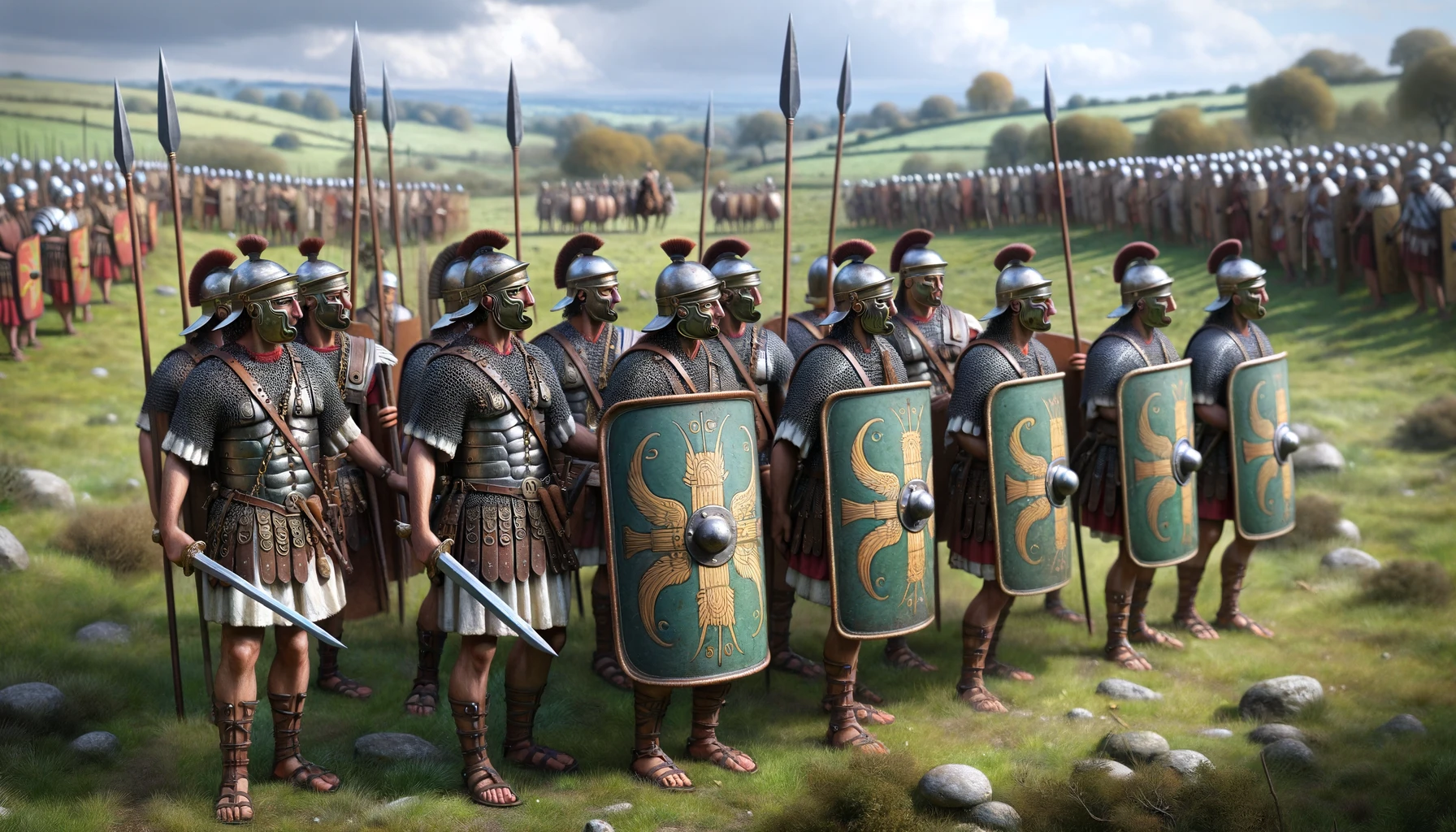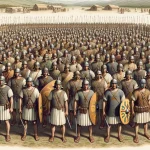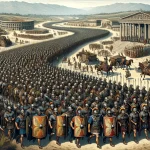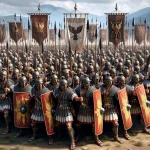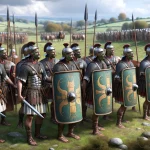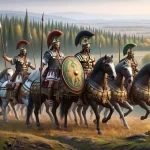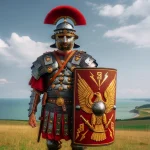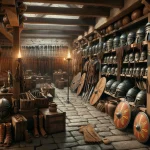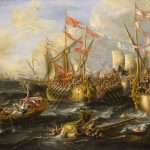The Roman Army, renowned throughout history for its incredible might and tactical innovation, was the formidable military apparatus that enabled the Roman Republic, and later the Roman Empire, to exert its influence and authority over a vast expanse of territory for several centuries. Known for its strict discipline, advanced engineering, and efficient organization, the Roman Army was a complex and multi-faceted force that evolved over time to meet various challenges, both internal and external. It comprised primarily the Roman Legions, the Auxiliaries, and the Navy, each playing a crucial role in maintaining the security and prosperity of one of history’s greatest empires.
- Roman Legions: From Tribal Levy to Imperial Legion
- Roman Legions: Structure and Ranks
- Roman Legions: The Time of Caesar
- Roman Legions: Formations
The Roman Legions
The legions were the elite heavy infantry units of the Roman Army and the mainstay of Roman military power. Comprising Roman citizens only, each legion was a disciplined and well-trained fighting force, numbering between 4,000 to 6,000 soldiers. Legionaries were equipped with a full panoply of armor and weapons, including the iconic gladius (short sword), pilum (javelin), and scutum (shield). The organizational structure of a legion was highly sophisticated, divided into cohorts and further into centuries, each led by a centurion. Legionaries were not only warriors but also skilled engineers, responsible for constructing camps, fortifications, bridges, and roads, contributing significantly to Roman civil engineering marvels.
- Roman Legionaries: Armour
- Roman Legionaries: Centurions
- Roman Legionaries: Veterans
- Roman Legionaries: Weapons
- Roman Legionaries: Standards
Roman Auxiliaries
Auxiliaries were non-citizen troops in the Roman Army, recruited from the provinces and allied or conquered nations. These units provided the Roman military with specialized capabilities that the legions typically did not possess, such as light cavalry, archers, and slingers. Auxiliaries served as a vital supplement to the heavy infantry of the legions, often deployed as skirmishers or used to guard the flanks in battle. Unlike the legions, auxiliaries were more lightly armed and wore less Armor. Serving in the auxiliaries was a path to Roman citizenship, an enticing incentive that drew recruits from diverse backgrounds into the Roman military fold.
The Roman Navy
The Roman Navy, while often less highlighted compared to the legions, played a pivotal role in the Roman military system, particularly in the context of Roman Britain. Its primary function in this region was the patrolling and securing of the waters surrounding Britain, a crucial aspect of maintaining Roman control over this distant province. The navy facilitated the movement of troops and supplies across the English Channel, ensuring a steady logistical link between Britain and the continental territories of the empire. This naval capability was essential not only for the initial Roman invasion and subsequent conquests but also for defending against seaborne threats, including pirates and hostile tribes. Roman naval vessels, such as the agile galleys, patrolled the coasts and rivers, providing a mobile and responsive military presence. In addition to their military duties, the Roman Navy’s control over the seas around Britain was vital for trade and communication, helping to integrate this far-flung province into the economic and cultural fabric of the Roman Empire. The navy’s operations in these waters demonstrated Rome’s ability to project power far from its heartland and secure its frontiers on distant shores.
